-
 +14 +3
+14 +317-pound meteorite discovered in Antarctica
Antarctica is a tough place to work, for obvious reasons—it's bitterly cold, remote, and wild. However, it's one of the best places in the world to hunt for meteorites. That's partly because Antarctica is a desert, and its dry climate limits the degree of weathering the meteorites experience.
-
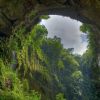 +14 +4
+14 +4Scientists Discover Giant Sinkhole in China With Primeval ‘Lost World’ Inside
At 630 feet deep, the sinkhole would hide the Washington Monument and then some. The bottom of the pit holds an ancient forest spanning nearly three football fields in length, with trees towering over 100 feet high. And according to the Chinese government, it is one of 30 enormous sinkholes in the county.
-
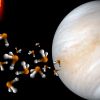 +11 +2
+11 +2Life on Venus? Intriguing molecule phosphine spotted in planet's clouds again
There's a new chapter in the Venus phosphine debate.
-
 +24 +3
+24 +3Alien technology? Harvard professor finds fragments that could be of otherworldly origin
An astrophysicist at Harvard University believes he may have found proof of extraterrestrial life not by studying the vast night sky, but by combing the bottom of the Pacific Ocean. Last month, a crew aboard a boat called the Silver Star embarked on an expedition to Papua New Guinea with the mission of recovering fragments from a mysterious meteor that had crashed into Earth in 2014.
-
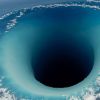 +16 +1
+16 +1Origin Of A Mysterious ‘gravity Hole’ In The Indian Ocean Unravelled
A mysterious giant 'Gravity Hole' has appeared in the Indian Ocean and the scientists are shocked by this discovery.
-
 +41 +3
+41 +3A desert fungus that infects humans is spreading
-
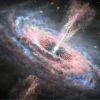 +13 +4
+13 +4In a first, JWST detected starlight from distant galaxies with quasars
Until JWST’s sharp infrared eyes came along, it wasn’t possible to see the galaxies hosting extremely bright supermassive black holes called quasars.
-
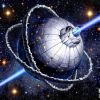 +4 +1
+4 +1Repeated signals from the center of the Milky Way could be aliens saying hello, new study claims
Could intelligent aliens be lurking at the heart of the Milky Way? A new search for extraterrestrial life aims to find out by listening for radio pulses from the center of our galaxy. Narrow-frequency pulses are naturally emitted by stars called pulsars, but they're also used deliberately by humans in technology such as radar.
-
 +6 +1
+6 +1Helsinki University makes Parkinson's disease breakthrough
Scientists at the University of Helsinki on Friday said they had demonstrated that certain strains of Desulfovibrio bacteria are probable causes (siirryt toiseen palveluun) of Parkinson's disease in most cases. This finding enables screening carriers of Desulfovibrio strains and subsequently removing the bacteria from the gut. This may make it possible to prevent Parkinson's disease.
-
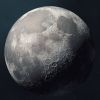 +4 +1
+4 +1Scientists discover gigantic 'structure' under the surface of the Moon
The Moon has been a subject of awe and fascination for millennia, with its shape-shifting powers and enigmatic dark side.And though it’s the one celestial body on which man has taken (small) steps, we still have big leaps to go in understanding its potential and uncovering its secrets.However, one h...
-
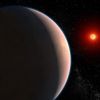 +24 +3
+24 +3James Webb telescope detects water vapor in nearby star system, but its origin remains a mystery
The James Webb Space Telescope may have just given the world another monumental scientific breakthrough. On Monday, NASA announced that astronomers detected water vapor around a distant rocky planet with the help of JWST.
-
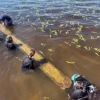 +11 +1
+11 +11,000-year-old canoe recovered from N.C. lake moves Waccamaw tribe members to tears
When Michael Jacobs first laid eyes on a canoe his ancestors expertly crafted a millennium ago, he says he "couldn't do nothing but cry." Jacobs is the chief of the Waccamaw Siouan Tribe in southeastern North Carolina, where a team of archaeologists and tribe members and local residents recently pulled a 1,000-year-old canoe from the water.
-
 +4 +1
+4 +1Scientists Discover Leak in the Bottom of the Ocean
It may be more likely than ever that the next mega-earthquake is going to happen in the PNW — and a hole in the bottom of the sea may provide clues.
-
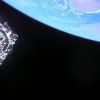 +19 +3
+19 +3Webb telescope discovers oldest galaxies ever observed
The James Webb Space Telescope has discovered the four most distant galaxies ever observed, one of which formed just 320 million years after the Big Bang when the universe was still in its infancy, new research said on Tuesday.
-
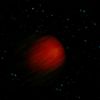 +23 +4
+23 +4Webb telescope finds a 'hot Jupiter' exoplanet that defies expectations
The atmospheres of gas giant planets across the Milky Way galaxy can be very different from those in our solar system, the James Webb Space Telescope has found. Observations of the distant exoplanet HD149026b, also known as Smertrios, revealed that the planet's atmosphere is rich in what scientists call heavy elements, essentially anything other than hydrogen and helium. In Smertrios' atmosphere, the James Webb Space Telescope detected high concentrations of carbon and oxygen.
-
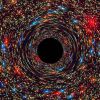 +14 +4
+14 +4Scientists May Have Found an ‘Ultramassive Black Hole’ With a Mass of 30 Billion Suns
Scientists may have identified an ultramassive black hole 30 billion times the mass of our sun hiding in an image captured by the Hubble Space Telescope. Black holes are born when colossal stars many times the size of our sun run out of fuel, and collapse in on themselves in spectacular fashion. The resulting singularity is incredibly dense, and boasts a gravitational pull so powerful that light itself cannot escape it.
-
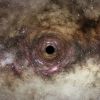 +9 +1
+9 +1Ultramassive black hole discovered by UK astronomers
An ultramassive black hole about 30bn times the mass of the Sun has been discovered by astronomers in the UK. Scientists at Durham University said the gargantuan black hole was one of the biggest ever found. The team described their findings, published in the journal Monthly Notices of the Royal Astronomical Society, as “extremely exciting”.
-
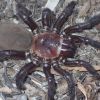 +23 +4
+23 +4Trapdoor spider: New giant species found in Australia
Australian researchers have discovered a super-sized species of trapdoor spiders found only in Queensland. The females of this rare species can live for over 20 years in the wild and grow up to 5cm long - large in trapdoor spider terms. The males grow up to 3cm. Unfortunately, much of its habitat has been lost due to land clearing, making it likely to be an endangered species, scientists said.
-
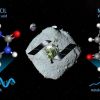 +15 +3
+15 +3RNA compound and vitamin B3 found in samples from near-Earth asteroid
Organic molecules, including uracil and niacin, have been detected in samples collected by Japan's Hayabusa2 mission from the near-Earth asteroid Ryugu. Uracil is a component of RNA while niacin is better known as vitamin B3, a key cofactor for metabolism.
-
 +12 +3
+12 +3Beethoven’s genome sequenced from locks of his hair
Beethoven’s genome has been sequenced for the first time by an international team of scientists using five genetically matching locks of his hair. The study's lead author is Tristan Begg, a final year Biological Anthropology PhD researcher from the Department of Archaeology and Clare Hall, University of Cambridge.
Submit a link
Start a discussion




















